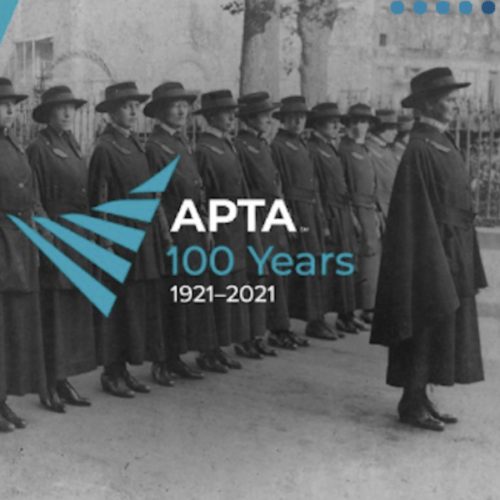
For the first part of this blog post, visit Part 1, or The History of Physical Therapy.
After World War I ended, many reconstruction aids found employment in civilian hospitals, physician officers, veterans hospitals, and many opened private practices. During the war the aids developed strong relationships and wanted to keep these friendships as well as share new knowledge to further improve their profession. They now called themselves “physiotherapists”, and began meeting in local areas, which would later become home to chapters of the American Physical Therapy Association.
Mary McMillian and her group came up with the idea for a national organization of physical therapists. The purpose of the organization was to not only bind the aids together but more importantly to build the progression of physical therapists. On January 15,1921 a committee met in New York “to discuss the question of forming a national physical therapy association.”
The pursuit of the national association was to:
- Form a nation-wide organization which will establish and maintain a professional and scientific standard for those engaged in physical therapy
- To promote the science of PT by cooperating in the establishment of standardized school of PT and encouraging scientific research in the profession
- To cooperate under the direction of medical professionalism and to provide a central registry which will make available to the medical profession efficiently trained assistants in PT.
- To provide information which will be available to the members of the medical profession and the general public and well as the members of the association
In March of 1921, the first PT Review was published by the American Women’s Physical Therapy Association. The work was done entirely by volunteers, and from this the PT Review developed into a professional journal which now covers the entire United States and Foreign countries.
Mary McMillian was elected president and the constitution was adopted. In 1922 the first convention was held in Boston. Later the members voted for a new name for the association because they did not want to exclude men from the profession: The American Physiotherapy Association. In 1946, the House of Delegates changed the name to the American Physical Therapy Association.
Continuing to Grow
The profession continued to grow during the 1940’s and 1950’s as the Polio epidemic and World War II increased the demand for Physical Therapy. Education programs also expanded, and shifted from hospital certificate programs to University Baccalaureate programs. In 1954 the PTA established standardized competency exams for state licensure, and in 1969 PTA’s graduated from programs and began treating alongside PT’s.
Between 1965 and 1984 the profession continued to evolve. As the demand for PT increased, technology, research and education also increased. In 1979 the House of Delegates adopted the policy that entry level education PT must be at post-baccalaureate by the end of 1990.
As early as 1993 Doctorate of Physical Therapy programs were established, but it was not until 2000 that the APTA adopted “Vision 2020.” Vision 2020 included six elements: direct access, evidence-based practice, professionalism, doctoring profession, autonomous practice, and practitioner of choice.
2021 marks APTA’s centennial, or a celebration of 100 years of growth. Physical Therapy has grown and can now be found in hospitals, private practices, out-patient clinics, schools, gyms, nursing homes, and in people’s homes. Physical Therapists can be generalists or specialists but one thing remains unchanged, Physical Therapists are lifelong learners who are committed to their profession and to the health and well-being of the patients that they serve.
for a detailed timeline check out APTA’s “100 Milestones of Physical Therapy” https://centennial.apta.org/home/timeline/

